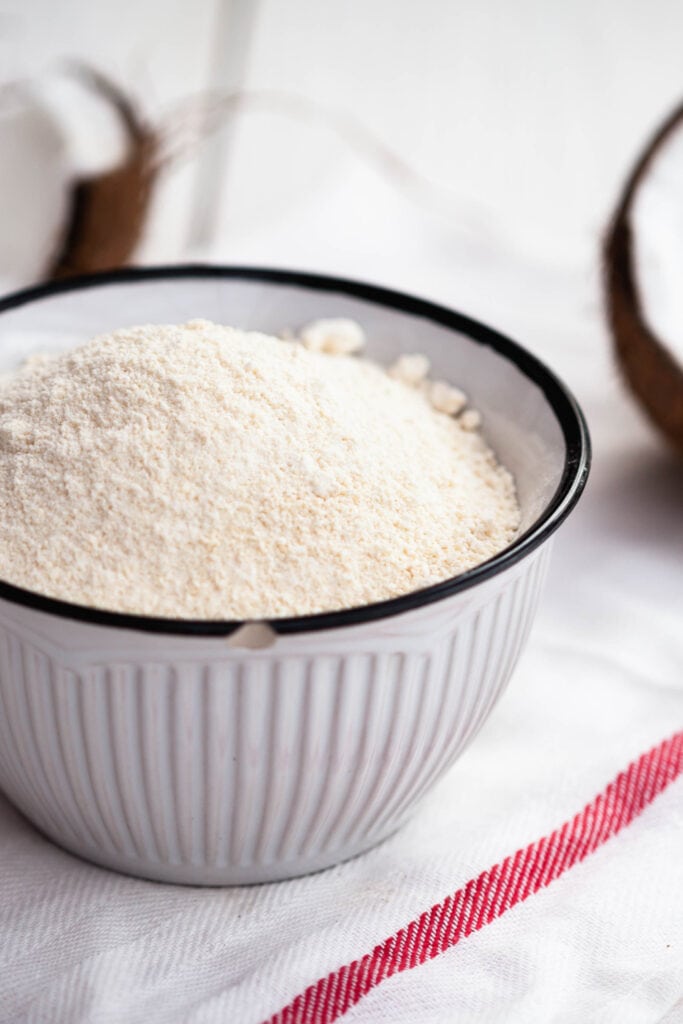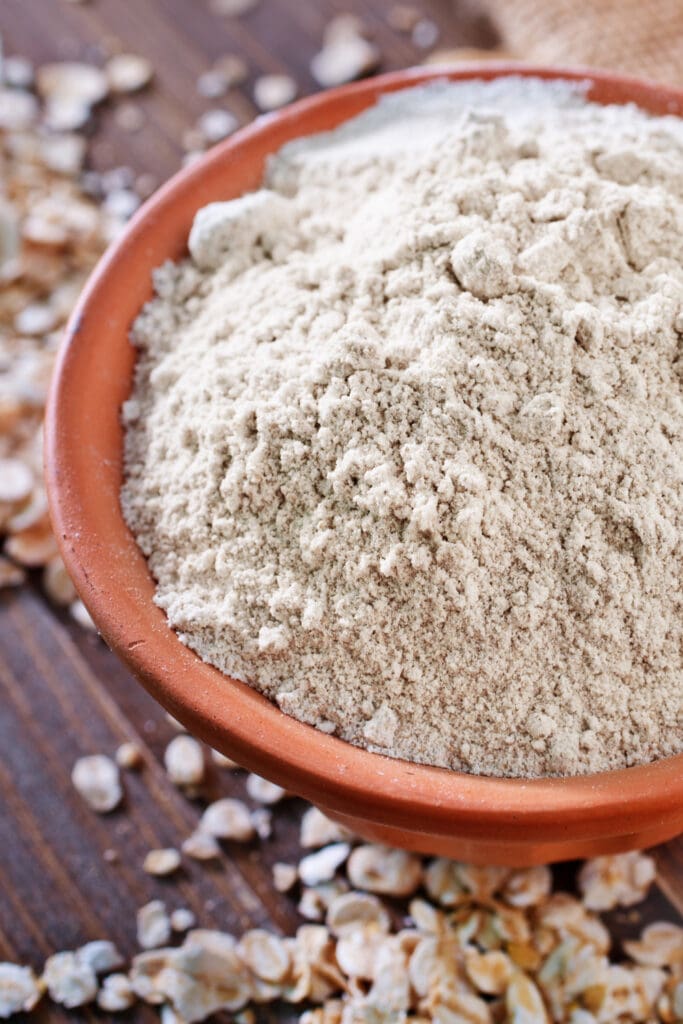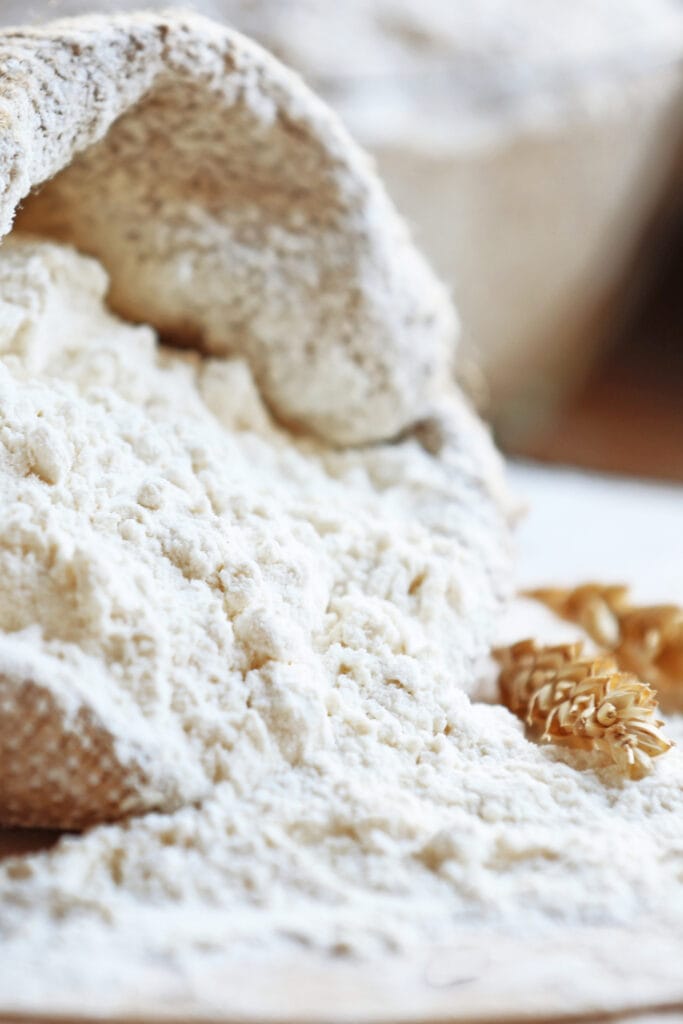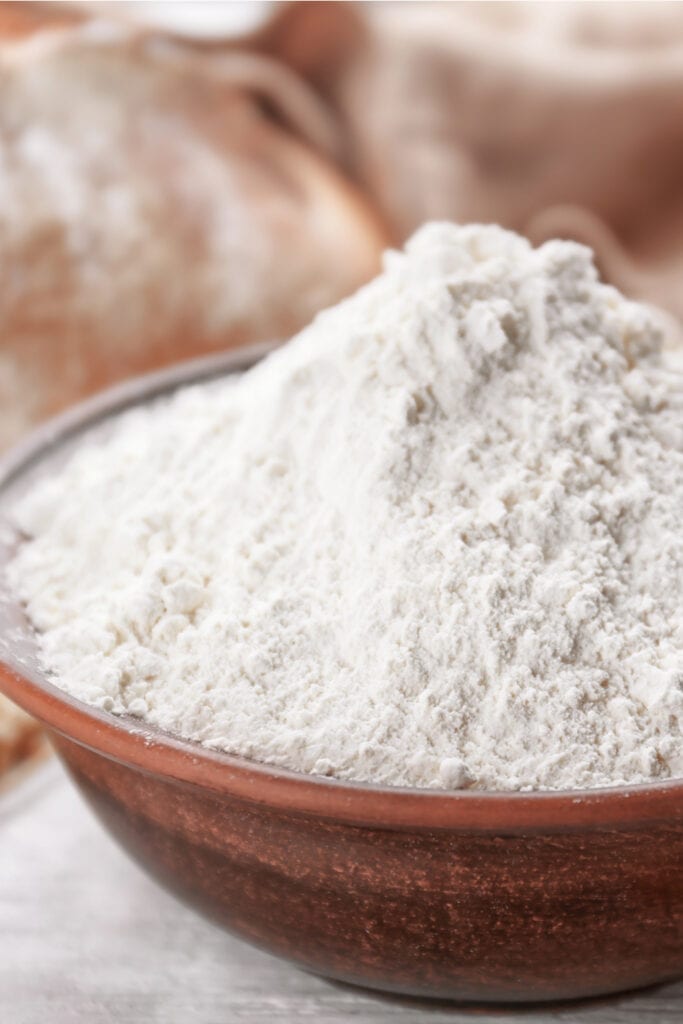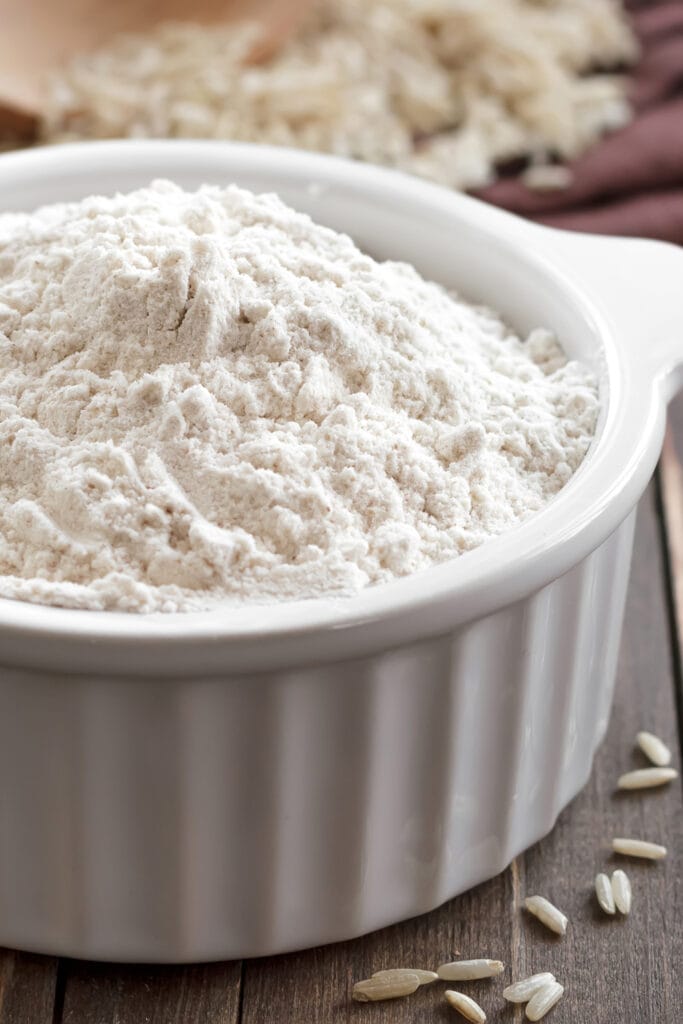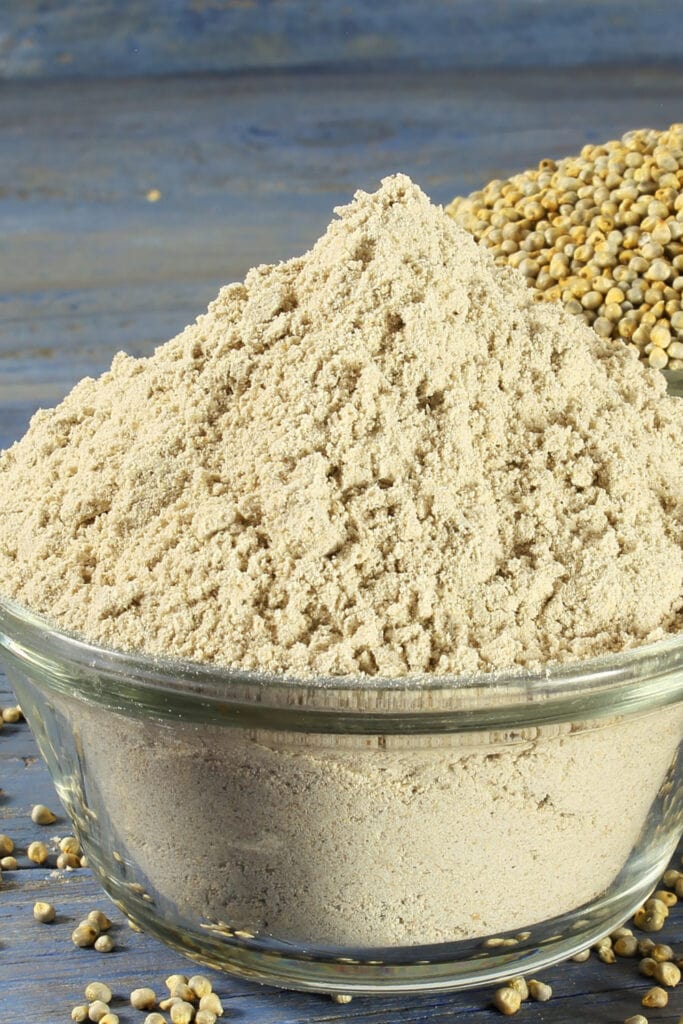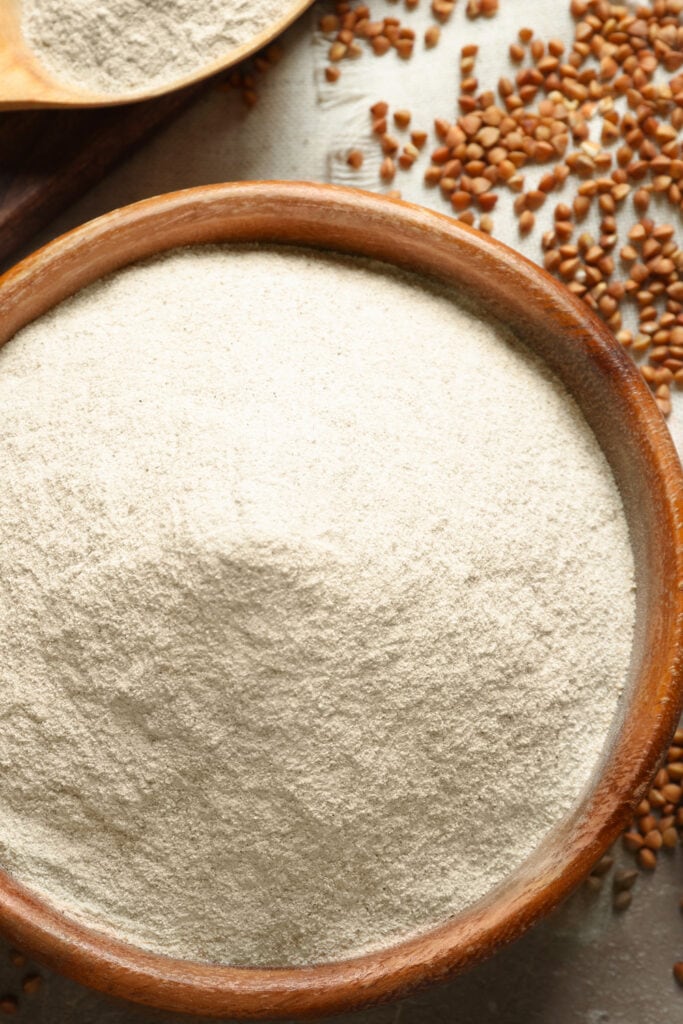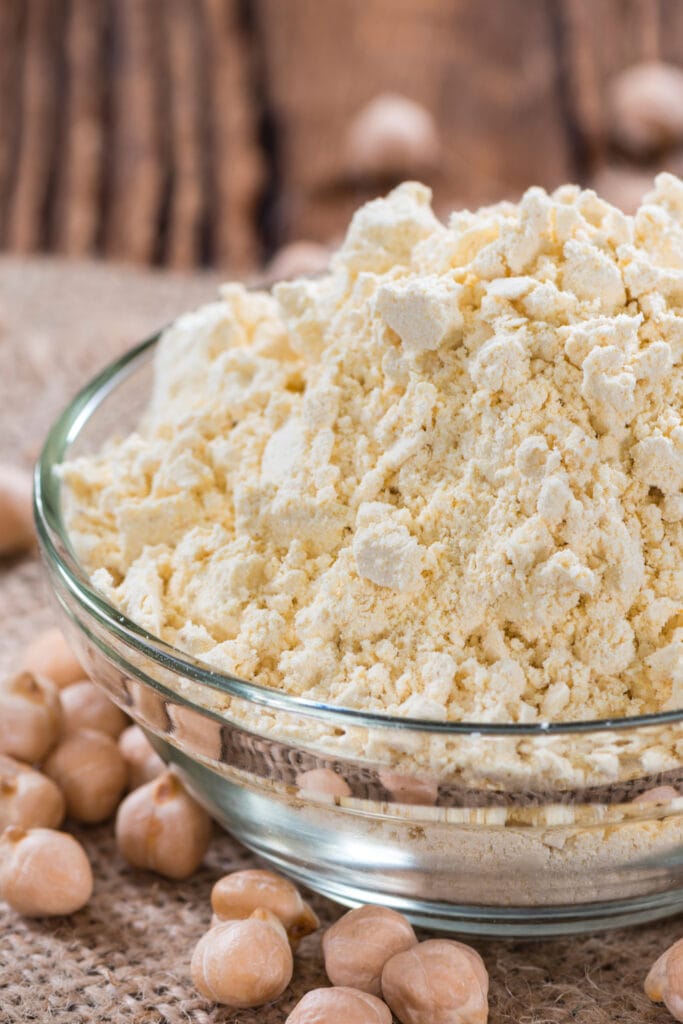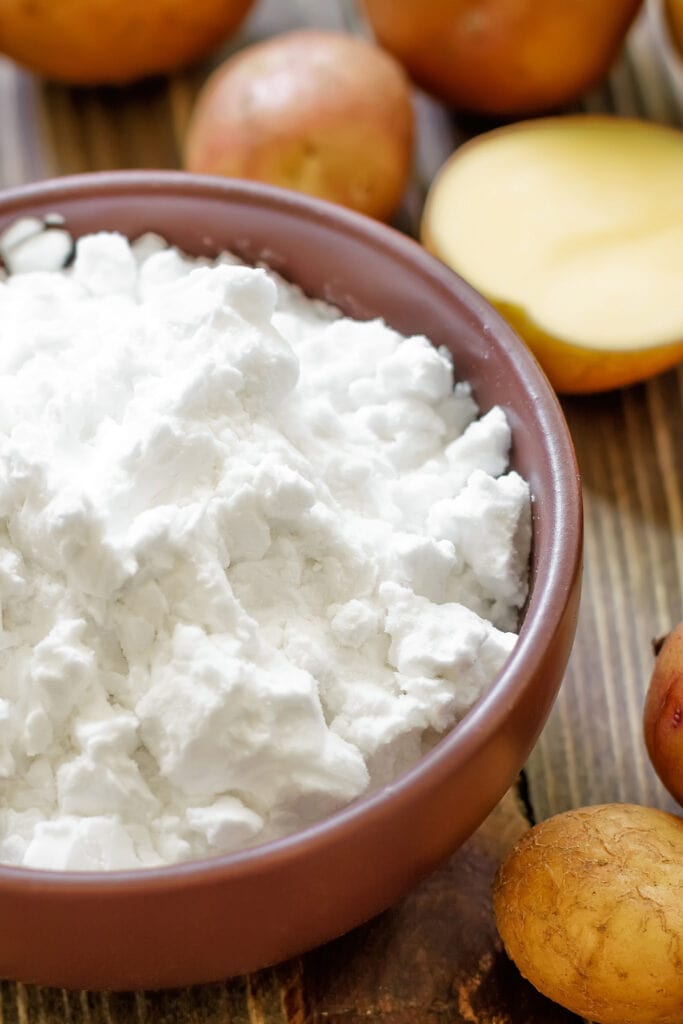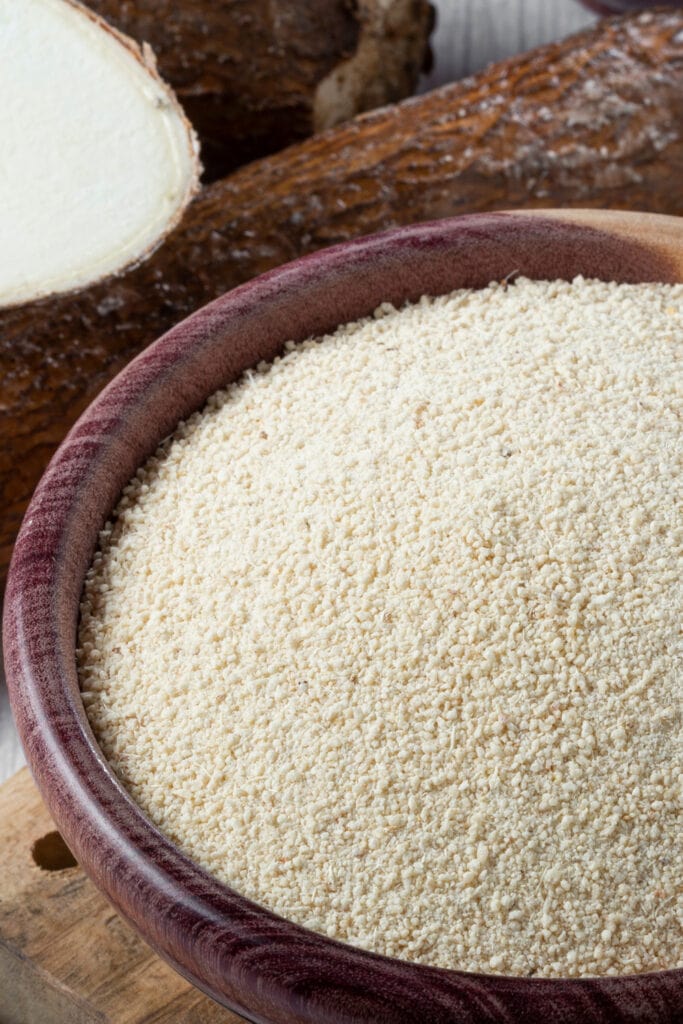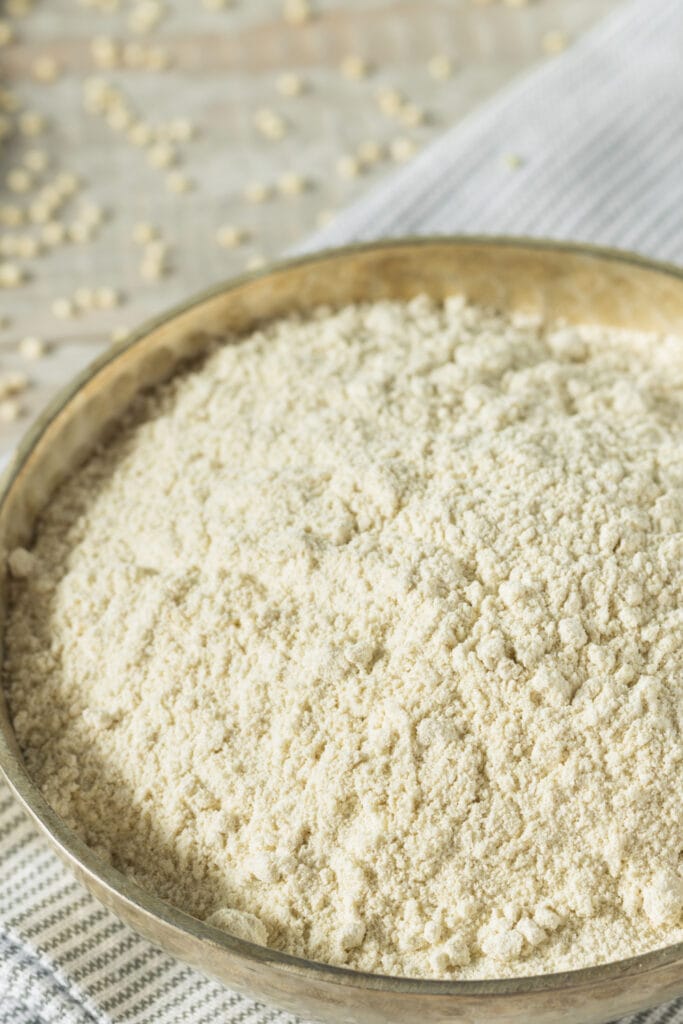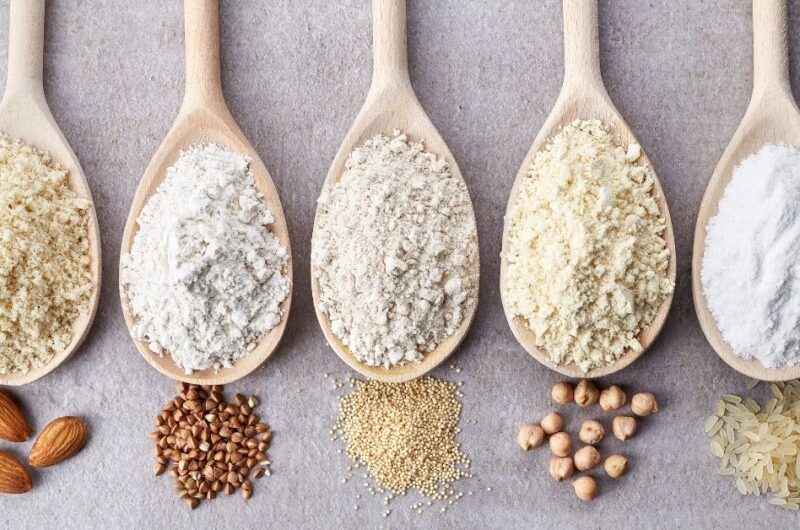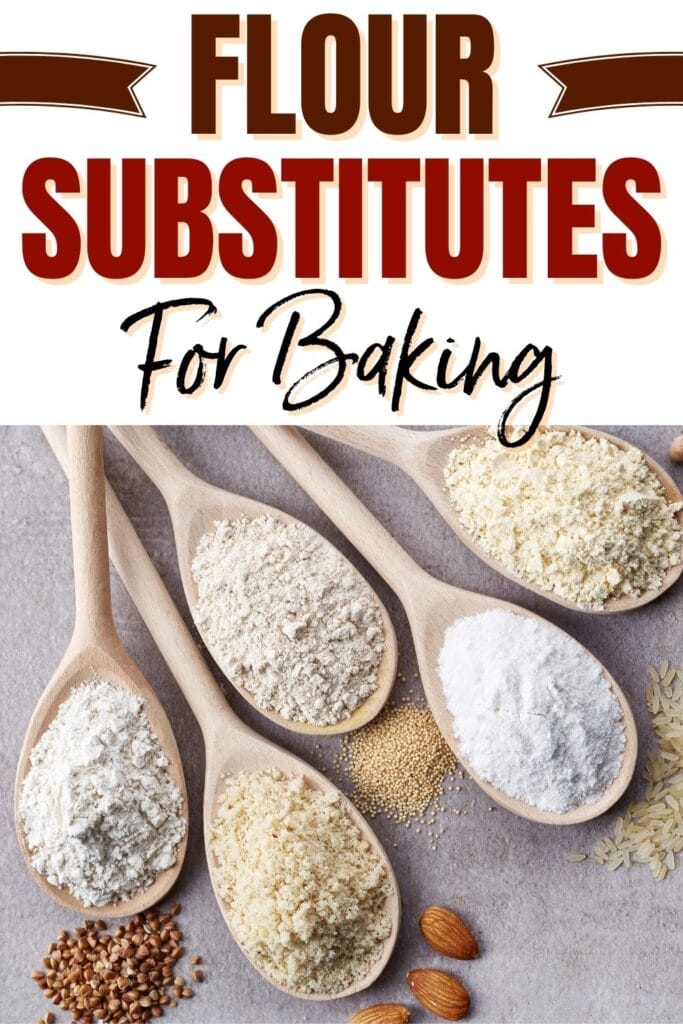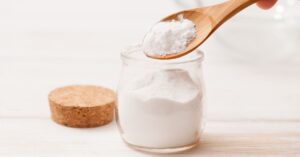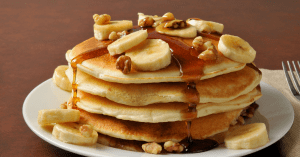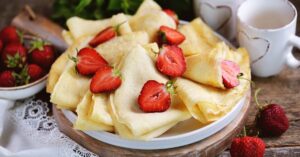All-purpose flour is the universal wheat-based powder used for baking cakes, cookies, pies, and other pastries. But I’m pretty sure you’ve seen the many different kinds of flour in the grocery, too. If you’re wondering if they all work the same way all-purpose flour does, this guide is for you. Fun fact: Did you know that there are at least 15 kinds of flour? Some flours can be used as an equivalent replacement to all-purpose, others you’ll need to alter the measurement. There are flours that should be used only for specific recipes. There are also others that are gluten-free, which is great for those with gluten sensitivity. Whatever your reason is for needing flour other than all-purpose, here are the best options.
1. Almond Flour
Almond flour is made by grinding dried-up almonds. The fact that it’s nut-based makes this flour gluten-free. It’s higher in calories than all-purpose flour. But almonds are a great source of healthy fat and protein, so it’s still the better choice. It’s healthier and will keep you full longer. Almond flour is great in banana bread and cookies. Use 3/4 cup almond flour with 1/4 cup of arrowroot or tapioca starch as a replacement for 1 cup of all-purpose flour. Not only will it make them gluten-free, but will also give them extra flavor. Oh, and if you’re making macarons, almond flour is the only option.
2. Coconut Flour
It’s high in fiber and low in carbs, making it a great option for those following the keto diet. It has a high moisture content, as well, and absorbs liquid very well. This means using this flour alone will result in a dry and dense baked good. That said, you’ll want to use coconut flour with additional fat or liquid to achieve the perfect baked good texture.
3. Cake or Pastry Flour
Cake flour is made from a softer kind of wheat and has the least gluten among all gluten-based flours. It’s specifically created for baked goods that are supposed to have an ultra-light and tender crumb. That said, cake flour is perfect for desserts such as angel food cakes and chiffon cakes. Avoid using it when making chewy bread like sourdough or dense desserts like pound cakes. Use equal parts cake flour when using it as an alternative to all-purpose flour. Don’t have cake flour on hand? You can DIY it! Here’s how:
- Measure 1 cup of all-purpose flour.
- Remove 2 tablespoons of the flour and replace it with 2 tablespoons of cornstarch.
- Sift the mixture twice. Pastry flour is a lot similar to cake flour and therefore has the same uses. The only difference is it contains slightly more gluten than cake flour.
4. Oat Flour
Oat flour is personally one of the most common substitutes I use when I run out of regular flour. It’s basically finely ground oatmeal, and it couldn’t be easier to make. Just throw oats in a blender and pulse until they turn into a fine powder. Just like almond flour, oat flour is also gluten-free. It’s slightly sweet, which makes it a great option for cookies, pancakes, and muffins. You can also use it to make breading. Oat flour, along with almond and coconut flour, is also great for no-bake recipes such as raw cookie dough. It’s much safer than all-purpose flour, which may contain E. coli. Don’t use it to thicken soups and sauces, though. It’ll mess up the consistency.
5. Whole Wheat Flour
Whole wheat flour is a hearty grain made from the whole kernel of wheat – bran, germ, and all. It’s not only more nutritious but also gives baked goods a rich and nutty flavor. Take note that it’s more absorbent than regular flour, though, and can lead to dry baked goods with a coarse crumb. But there’s an easy fix. When using it to make bread, use a 50/50 combo of whole heat and white flour. (When I say white flour, I mean either all-purpose, cake, or bread flour.) When making cookies and quick breads, on the other hand, use 7/8 cup of whole wheat flour in place of 1 cup of all-purpose flour. Final tip: let the batter rest for 10 minutes before baking to hydrate the flour’s bran and germ. This will result in a more tender baked good.
6. Bread Flour
Bread flour is also made from wheat, much like all-purpose flour. The difference is it uses a harder wheat berry, which gives it more protein and gluten. It’s precisely why this flour is perfect for making bread and baked goods that are supposed to have a stronger structure and a chewier texture. Don’t use bread flour when making light and fluffy cakes and cupcakes, otherwise, the goods will be heavy and dense.
7. Rice Flour
Rice flour is, as you may have guessed, made from rice. It’s great for making gluten-free cakes and cookies. It’s also the number one choice when it comes to making Asian dishes like mochi and dumplings. Rice flour is also a fantastic ingredient for breading such as in tempura and fried chicken. It gives such fried treats a light, crunchy, and crispy outer coating. Its versatility doesn’t end there, as rice flour is also ideal for thickening stews and sauces. Pro-tip: when buying rice flour, be sure to use one that’s finely ground. Regular rice flour tends to be sandy and gritty, which gives finished products a similar texture.
8. Millet Flour
Millet flour is another gluten-free substitute. In case you’re not familiar, millet is a whole grain with a mild nutty flavor. It’s best used along with all-purpose flour (1:4 ratio) to make bread.
9. Buckwheat Flour
Buckwheat flour is made from an ancient seed that also happens to be gluten-free. I know that sounds strange considering it’s called buckwheat flour. But like I said, buckwheat is a seed, not wheat. This flour is rich in fiber and vitamins and has a lightly floral and nutty flavor. It’s got a bit of a chalky texture, though. You want to use it with equal parts of another kind of gluten-free flour, such as almond or oat, when substituting for all-purpose flour.
10. Chickpea Flour
Made with ground chickpeas, chickpea flour (also referred to as garbanzo bean flour) is popularly used in India. There, they call it besan. It’s rich in fiber and protein and is also gluten-free. Apart from being a healthier option, it’s also a versatile flour that can be used to make bread, dessert, and curries. Unlike other gluten-free flours, the wildly dense chickpea flour has more binding powder. Just mix it up with a bit of water, oil, and salt, and it transforms into a dense paste that you can use to bind anything, from fritters to meatballs.
11. Potato Flour
Potato flour is a gluten-free flour made from ground whole (but peeled) potatoes. It’s very good at retaining moisture and makes fantastic yeasted breads with a moist crumb and a long shelf-life. Use potato flour to make potato bread rolls, brioche bread, biscuits, and more. It’s also a fantastic thickening agent for sauces, gravies, and soups.
12. Rye Flour
Rye flour comes in different colors: white, light, medium, and dark. Its hue is dependent on the amount of bran that remains on the grain used to make it. The darker the rye flour, the heavier it is and the fruitier it tastes. It’s great for making sourdough bread, fruitcakes, scones, pasta, and crackers. Of course, we can’t forget about pumpernickel bread, which is made with the darkest kind of rye flour. Rye flour is NOT gluten-free.
13. Amaranth Flour
Amaranth flour is a gluten-free flour made from an ancient grain that’s loaded with protein and amino acids. It has a dense grain with a slightly earthy flavor, so don’t use a 1:1 ratio when using it to replace all-purpose flour. Go for a 50:50 ratio instead with another light flour, such as all-purpose or whole wheat flour.
14. Cassava Flour
Cassava flour is yet another gluten-free and grain-free flour. It’s made from yucca root and has a very similar flavor and consistency to all-purpose flour. It’s more absorbent, though, which means you’ll need to use less of it to avoid a dry baked good. When using it for baking batter-based goods, start by adding just a small amount and gradually add it until you get the best consistency.
15. Quinoa Flour
Made by grinding quinoa seeds to a fine powder, quinoa flour makes for another fantastic alternative to all-purpose flour. The use of high-protein, high-fiber superfood makes this flour super nutritious. Plus, it’s a versatile flour that you can use to make cakes, muffins, and quick breads. Keep in mind it has a distinctive earthy and nutty taste, though. Consider using it in baked goods with bold flavors such as chocolate and spiced cakes to mask its taste. Click on a star to rate it!
Average rating 5 / 5. Vote count: 1 No votes so far! Be the first to rate this post.
Share on social media: Let us improve this post!





